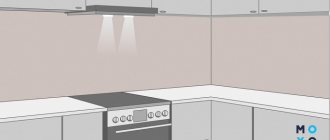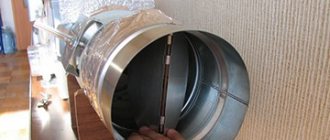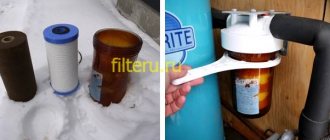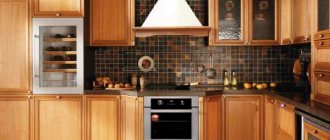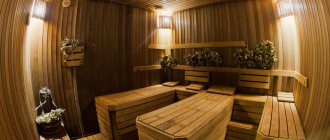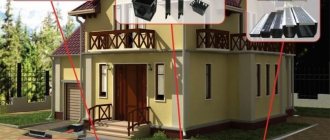To maintain a normal microclimate and preserve the finishing of the room in proper form, a modern kitchen cannot do without a hood. However, it is not always possible to connect the device to the general house ventilation system. In this case, you can lead the air duct directly to the street. However, the ideal solution is an exhaust hood without venting , which is the subject of this article.
Hoods without venting into ventilation are called recirculation hoods.
Kitchen hood without ventilation outlet: characteristics of the device
There are often cases when the ventilation duct is located too high or far from the hob, or the owners do not want to install corrugation, which spoils the interior of the kitchen. The ideal solution for these situations would be to install a hood with a carbon filter without venting into the ventilation. This is also a suitable option for apartments in multi-storey buildings, since exhaust models of devices can provoke complaints from neighbors about odors that enter their premises from the ventilation duct.
Recirculating hoods have a filter, with the help of which the space is cleaned.
What is a hood without venting called?
It is referred to as a recirculation device. Such equipment is a kind of filter, which, thanks to a multi-stage filtration system, purifies the air from various types of contaminants in the form of burning, grease and odors. On a note! Installing a recirculation filter device is advisable if the ventilation duct is not operating efficiently or if it is in a faulty condition; in this situation, you can also install a kitchen hood with an outlet to the street.
The recirculation device consists of a housing, a motor and two fans, which are located between the filters or on top of them.
All internal elements are made of non-oxidizing materials. The performance of the device depends on the engine power.
Question No. 4. What types of filters are there and how do they work?
In the standard set, the recirculation hood has two filters.
| Grease trap | It is through this filter that the air passes first. A metal (most often aluminum) shield with a fine mesh designed to trap large particles. Requires periodic cleaning, for example with regular dishwashing detergent. If heavily soiled, you can soak it. Metal is the most popular material for a grease filter, but in cheaper models you can also find other options, such as acrylic. |
| Coal (replaceable) | Charcoal can absorb odors, which is why it is used as a second filter. At the same stage, smaller particles are removed from the air. This filter cannot be cleaned, so it must be replaced. |
There are other filters, such as water filters. But they are used only in professional equipment in public eating places.
How does a hood work without venting?
The recirculating hood is equipped with two levels of protection. The first is represented by special acrylic purifiers that perform rough cleaning of the air from impurities. In addition, non-woven or disposable paper cassettes can be used here as filters. The service life of such filters does not exceed 6 months. New elements can be original or universal. The first option corresponds to a given brand of exhaust device, and the second may be suitable for different models. Its cost will be lower, but the quality will be inferior.
Comparative diagrams of the operation of hoods with venting and recirculation.
At the first level of cleaning, metal filters made of aluminum and stainless steel can be used. This option is more economical since the cassettes do not need to be replaced. To clean, the filters are washed under running hot water with detergent, which is done at least once a month.
On a note! Metal filters with 5 layers of mesh are considered the most effective.
The grease filter is a mandatory design element, without which the hood will not function for long. This will happen due to the fact that all internal parts of the system will quickly become covered with fatty deposits, which are extremely difficult to remove.
The second level of purification is represented by carbon filters. Such cassettes are disposable. They have a round or rectangular shape. The internal space of the cassette is filled with environmentally friendly absorbent in the form of activated carbon. Such filters can function effectively for 3-4 months with active use of the equipment.
A kitchen hood without exhaust purifies the air in two stages.
How does the hood work? During fan operation, contaminated air enters the grease filter through the operating panel. Then it goes through the second level of cleaning, where it is freed from odors and minor contaminants. Purified air is returned to the room through holes in the device body.
Classification by type of cleaning
According to the method of air purification, all exhaust devices can be divided into two large groups. There are recirculation systems: they pass air from the kitchen through special filters and return it back. In fact, they are not even exhaust systems, because the air from the room does not escape anywhere, but is simply cleaned using the right components.
The second type of device is flow-through, which remove contaminated air into the ventilation system of the house and then outside it. Such hoods are equipped with a special pipe - it can be either corrugated or a metal air duct of round or square cross-section. It is with its help that the unit is connected to ventilation.
If we talk about size, the first type of device is often more compact and much easier to connect.
Today there are also combined hoods on the market: they combine both operating options, which you can switch between as needed.
Strengths of hoods without venting
When considering the question of which hood to choose for the kitchen: with a ventilation outlet or without an air duct, you should study the main advantages of recirculation devices. Thanks to a two-level filtration system, the air in the kitchen is effectively purified from various contaminants. Circulating hoods often block the exhaust ventilation channels, while recirculating hoods eliminate the possibility of air stagnation. Such devices are characterized by low noise and vibration levels during operation.
Installing a hood with a carbon filter in the kitchen without a ventilation outlet is most justified if there is a gas water heater in the room. The operation of a circulating exhaust device can cause reverse draft, which increases the likelihood of carbon monoxide poisoning.
Note! A recirculating exhaust hood can be installed to purify air in rooms other than the kitchen, such as the garage.
Recirculation exhaust devices can be installed in any room.
The recirculation type hood is not equipped with an air duct, which allows you to save free space in the kitchen. This is especially important for small spaces and does not spoil the interior.
Compared to diverting devices, such a device is characterized by a laconic and universal design, lighter weight, which simplifies its transportation and installation. The device consumes less electricity than circulating options. Its operation eliminates the need for maintenance of the ventilation duct.
Air purification using a built-in filtration system eliminates the need for natural ventilation, which will help maintain the temperature in the room.
Practical recommendations
You should not resort to deliberately reducing the diameter of the air duct. If such a need arises, you should use an adapter, reducing the dimensions to a minimum. Ventilation located near the hood, on the same side, is very convenient. This option involves installing the system in the upper part of the kitchen cabinets. The location of such a channel on the other side provides the basis for laying the air duct along the ceiling. It can be disguised with special boxes in which it is easily installed. Matched to the color of the ceiling and walls, it will be almost invisible.
Ventilation through the attic or other rooms helps pre-cool the air. Condensation may occur in some areas. Over time, the traction force will decrease and mold will appear. Therefore, such a system should be finished with thermal insulation materials.
Disadvantages of recirculating kitchen hoods
When choosing such a filtration system for the kitchen, you should take into account the disadvantages of the device. For efficient operation of the hood, it is necessary to periodically change the filters, which entails additional financial costs. In addition, for some models of hoods, finding the necessary accessory is quite problematic.
Recirculation units require systematic replacement of filters.
If the air pollution is sufficiently strong, the cleaning system may not adequately cope with its function. In this case, it is possible to provide a combined type of kitchen hood that operates in exhaust and recirculation modes.
On a note! Making your own carbon filter will save you money, which is possible for some models.
The operation of a recirculating hood does not contribute to proper air exchange in the kitchen area. Therefore, if you install a gas stove, you should ensure a continuous flow of fresh air, which will eliminate the possibility of carbon monoxide poisoning.
The efficiency of hoods without outlet is lower than that of circulation models.
Recirculation devices without exhaust into ventilation are characterized by an efficiency factor of 70%, which is lower than that of circulation hoods. In addition, the price of carbon filtration systems is significantly higher than the cost of other analogues.
How to care
Not difficult at all. Before installing the hood, you must carefully read the instructions. It contains all technical and operational characteristics. All you need to do is monitor the condition of the filters and change them on time.
If your model has sensors indicating the degree of filter contamination, great, the indicator will show you when to replace it.
Remember to follow safety precautions when working with the device:
- When replacing filters, do not forget to turn off the hood.
- When leaving home, unplug it.
- When changing filters, be careful, the small metals of the unit are very fragile.
- Select appropriate filters - otherwise the quality of air purification will decrease.
- If there are glass surfaces, wash them with glass cleaner.
Types of hoods for the kitchen without venting into the ventilation duct
Based on the type of housing, hoods with a filter without outlet into the ventilation duct can be horizontal, vertical, inclined and telescopic. The first option is located parallel to the hob. For vertical devices, the filtration surface will be placed perpendicular to the plate, as a result of which it will take up more free space.
The inclined version is located relative to the slab at a certain angle. This hood is characterized by efficient and silent operation. Thanks to its favorable location, it saves space in the kitchen. The telescopic device is a type of built-in hood. The working surface of the device extends if necessary, and returns to its place after finishing work.
Depending on the installation option, there are the following types of kitchen hoods without venting to the ventilation: hanging, built-in and island. The first type of device is fixed to the wall. The second option is installed inside the kitchen unit. Such devices are characterized by lower productivity. Island devices are located at some distance from the wall and attached to the ceiling.
Based on the design features, hoods can be stationary or retractable. The latter option draws in steam over a larger area. This helps improve the efficiency of the device. According to the shape of the body, recirculation hoods can be flat, domed and curved.
Hoods without outlet are: vertical, horizontal, telescopic and inclined.
The body of a recirculation hood is often made of stainless steel or aluminum. Such options look harmonious in kitchens decorated in modern and high-tech styles. The surface of the products can be enameled. This option has a low cost. These hoods are easy to care for.
The most expensive devices are made of tempered glass. Such devices have a stylish look. However, hoods require careful care, since the material is quite fragile, which causes inconvenience when operating such equipment.
Shapes of hoods and kitchen design
The corner for the hood can also be beveled.
Corner kitchen air purifiers are hanging T-shaped or dome-type models. Mounting to the ceiling and built-in models of this type of hoods are not found.
Dome - hide the suction surface behind the side walls. These hoods have a classic look and are often used for kitchens in classic, retro, Provence, and country styles. For depth of style, they are trimmed with wooden inserts and shelves.
T-shaped models have an open work surface. Their ultra-modern look adorns interiors in high-tech, loft, minimalism, and modern styles.
T-shaped corner hoods for kitchens are a more suitable option for small spaces, but dome hoods will better decorate the corner of a large, spacious kitchen.
Color solutions should take into account the overall background of the kitchen. The range of color designs is very diverse - gray, black, white metal, imitation wood, original designer colors.
How to choose a kitchen hood over the stove: important criteria
When deciding which hood to choose for your kitchen, you should first study the performance characteristics of the appliances. An important parameter is the power of the device, which is in the range of 150-350 W. It is selected depending on the dimensions of the room. You should not purchase a device for a large room that has low power, which simply will not cope with the task.
It is also not recommended to give preference to a model with high power exceeding the optimal value for a particular room. This decision is economically unjustified, since electricity costs will increase. In addition, a more powerful kitchen hood is characterized by an increased noise level.
When choosing a hood, first of all you need to pay attention to the power of the device.
The performance of the device is selected based on the intensity of the load on the hood. For a small family in which simple dishes are prepared, a model with an indicator of 200-300 m³/hour is sufficient. For large families that eat a variety of foods, hoods with a capacity of 300-400 m³/hour are suitable. For those who cook a lot often, it is necessary to give preference to models with a capacity of 500-600 m³/hour.
The noise level is of no small importance, which determines the comfort of using the device. The optimal value for a small space is 45 dB. For a spacious room, this parameter can reach 55 dB.
The size of a kitchen hood with a carbon filter without a ventilation outlet must correspond to the dimensions of the hob. The ideal option is a model whose dome will protrude 10 cm beyond the slab. A backlit model is easy to use.
Types of installation of household exhaust devices
Air purifiers differ not only in operating principles, but also in types of installation.
- Flat hanging models. They are a canopy and are installed above the stove on the wall. A kitchen hood of this type is not always efficient enough, but has a varied design and small size.
- Ceiling air purifiers. They are attached to the ceiling. Island models are only suitable for large and spacious rooms.
- Built-in models. Mounted inside a cabinet hanging above the stove. The most compact type of hoods. They are closed with a cabinet, which allows you not to overpay for the design.
Each type has its own capabilities. Flat hanging models have an interesting design. Ceiling air purifiers are more powerful.
How to choose a hood without outlet: other important parameters
It is advisable to choose a high-quality device from a trusted manufacturer who has proven itself to be the best in the household appliances market. An important nuance is the type of filters used in the system. The degree of distribution of cassettes depends on this criterion, since they need to be changed periodically.
The comfortable noise level of the hood is 45-55 dB.
The material used to make the body of the hood with a carbon filter affects the features of caring for the device. The most capricious equipment is made of tempered glass.
Some hood options are equipped with a function for changing the speed mode. This option allows you to adjust the filtration intensity depending on the type and quantity of food being prepared in the kitchen. This helps reduce energy costs.
Kitchen hoods without venting to ventilation can have a mechanical or electronic control panel. The first option is presented in the form of buttons or sliders. Push-button adjustment is popular because it is more convenient. The slider setting is not very reliable and may begin to jam after a while due to the accumulation of fatty deposits.
On a note! For ease of use, some modern models are equipped with a filter contamination indicator, remote control, an option to automatically turn the device on and off, a timer, and a clock, which increases the cost of the device.
The dimensions of any hood must correspond to the size of the stove.
Models of hoods with an electronic panel are characterized not only by ease of use, but also by increased cost. The command can be given either through the touch display or using the remote control.
Brands and prices
Prices for corner hoods fluctuate over a very wide range and depend on performance, size, quality of material, design and the number of additional functions. The simplest models can cost about 12 thousand rubles. Models with touch or remote control and a liquid crystal display, ultra-modern design will require 90 thousand and above.
Well-known brands also dictate prices higher than little-known companies, but their prestige guarantees an order of magnitude higher quality.
Recommendations for installing a kitchen hood without ventilation outlet
The functionality of the exhaust system directly depends on the correct installation of the device, which must be carried out in strict accordance with the instructions. The equipment is mainly fixed to the walls and ceiling. Before installing the device, you must check the strength of the base to eliminate the possibility of falling. If the device is mounted in a cabinet, it should be prepared in advance.
A kitchen hood without a ventilation outlet must be located at a certain distance relative to the hob, which is regulated by current rules. It is necessary that the device be at a height of 75 cm above the gas stove, and 65 cm above the electric stove.
A 220 V socket should be installed near the hood. The device should be positioned in such a way that free access is provided for the exit of purified air.
The recirculation hood must be installed in accordance with the instructions.
According to the instructions, holes are made in the base using a drill for fasteners, which are secured with dowels and screws. Then the device is hung on fasteners, after which it is connected to the electrical network. After installation, it is necessary to check the operation of the hood without an outlet.
Hood sizes
The standard width of factory kitchen models is 60, 90 or 120 cm. The size of the air purifier should match or slightly exceed the dimensions of the work stove. For a standard hob with a width of 60 cm, an exhaust unit with a width of 90 cm is perfect. A model with a wide neck that is too large and should not be installed above a small stove, the efficiency will not increase, but the noise will significantly exceed the norm.
Diagram showing the required hood distance from the stove
Before purchasing an air purifier, keep in mind that according to the rules it is installed at a distance of 70 cm above the electric stove, and 80 cm above the gas stove.
Features of caring for hoods with a carbon filter without venting
In order for charcoal kitchen hoods to work effectively and efficiently, they must be maintained regularly. When dirty, the grease filter must be removed and washed with special detergents.
Note! When performing any preventive procedures, the hood must be de-energized.
The carbon cassette should be replaced periodically. The frequency of manipulation is related to the intensity of use of the device and the features of the model. To replace the filter, you need to pull out the grease mesh from the device, then remove the cassette. After this, the element is replaced with a new one, which is mounted on the seat and then fixed. Next, the grease filter is installed in place.
In order for the hood to work effectively, you need to change the filters on time.
The cost of a carbon filter varies in the range of 250-3000 rubles. You can use a universal option that is adjusted to the size of the worn element. When some filters become dirty, it is enough to wash them under running water and dry them, and then put them back in place. Only Elica offers this refurbishable accessory. Depending on the model, you can simply replace the cassette filling or make a cleaner yourself.
To make a homemade filter for an exhaust hood without an outlet, you will need a sheet of padding polyester and activated carbon in tablets or granules. A filter is cut from the blank on the base of the pattern of the old product, which consists of two pieces. Coal filler is placed between the sheets of padding polyester. The finished filter is inserted into the cassette.
Some hood models are equipped with carbon filters covered with a protective fabric layer. It can be removed and washed and then reused. In such cassettes it is easy to replace the carbon filler, which is poured between the fabric layers.
Note! Possible manipulations with carbon filters depend on the model of the hood and on the manufacturer’s recommendations, which are set out in the instructions.
The hood body can be wiped with a damp cloth and detergent.
Technical features of turning off general ventilation.
Everything related to turning off ventilation is also suitable for turning off any single-phase or three-phase load in the event of a fire.
Some technical features that were discussed in the article, methods for closing fire-retarding valves (FVAs), are also relevant for turning off ventilation - I will not repeat them here.
In this sense, this article will be a continuation of the article about disabling the OZK.
The technical means and solutions used to turn off ventilation will be similar to those used to turn off valves.
There is no need to monitor the integrity of the fan motor windings or their readiness to turn on at any time, as is required for fire ventilation systems for smoke removal and air pressurization.
But there are also features:
- It is often required that the ventilation does not turn on automatically after the “Fire” signal is reset.
- Or vice versa - so that the ventilation turns on itself without a person visiting the ventilation control cabinet.
- Ventilation systems with water circulation cannot be de-energized in cold weather - only turn off the fan itself.
- General ventilation control controllers cannot be tugged at the power supply - they have a special input for the “Fire” signal or an external “Stop” signal.
- Unlike the OZK, it is impossible to control the fan directly from the fire apparatus, since it is powerful and, most likely, three-phase.
- The fan will already be equipped with control devices: at least a trivial “Start/Stop”.
The best manufacturers of kitchen hoods without venting
When choosing a high-quality exhaust device, preference should be given to reputable manufacturers. One of the best companies producing household appliances for the home is Ariston, which occupies a leading position in the domestic market in analyzing sales results. The device models have a stylish, laconic design, making them ideal for modern kitchens. Photos of hoods without outlets clearly demonstrate the variety of options.
Integra's recirculation devices are famous for the best filtration systems. Such devices are also characterized by the presence of many options, which affects the cost of the equipment.
High-quality products, assembled in Germany, are offered by the well-known company Bosch. Models of hoods without a pipe are made mainly of stainless steel and tempered glass. The design of the devices is replete with variety, which allows you to choose a device in accordance with the specific interior of the room. The German brand Zigmund-Shtain competes with other manufacturers by producing household appliances of original design.
Recirculating hoods from Ariston have a stylish design and an affordable price.
The Slovenian company Gorenje has been specializing in the production of coal hoods for kitchens without outlets for many years. The devices offer an optimal price-quality ratio. Electrolux has proven itself to be the best company in the production of exhaust systems. It produces devices with a stainless steel body and an enamel surface, which makes it possible to choose a device for different segments of the population.
Exhaust fan
An important component for hoods is a fan, which draws polluted air out of the room. Diametrical or tangential fans have proven themselves well in exhaust systems - they hold the maximum load well.
The fan impeller looks like a hollow cylinder made of slightly forward-curved blades, which creates a uniform air flow. This type of product has a high efficiency = 0.7, high air flow, which is easily directed in any convenient direction, and a low noise level. They also create a fairly low pressure in the system.
Popular built-in hoods with an elite class carbon filter
The FALMEC Downdraft 600 120 WH, a coal hood built into the countertop for a kitchen without an air duct, is distinguished by its original design. The device body is made of stainless steel with tempered glass inserts. The device is controlled using an electronic touch panel and remote control. The device can operate in one of four modes, including intensive. The model is equipped with LED lighting. The hood operates with a noise level of 66 dB.
The air is purified from grease and fumes using a stainless steel grease filter and from kitchen odors thanks to a charcoal cassette. The productivity of the device reaches 960 m³/h, the power is 320 W. You can buy a hood for 160 thousand rubles.
The ideal solution for a large kitchen or a room combined with a living room or dining room is a built-in electric hood for ceiling mounting Smeg KSC90B. The device provides perimeter suction of contaminated air, which is cleaned of fats thanks to special stainless steel filters. A carbon filtration system is used to eliminate odors. The hood can operate at three speeds and in intensive mode with maximum suction power. The productivity of the device is 830 m³/h, the power is 224 W.
The FALMEC Downdraft 600 120 WH device is designed for installation in a countertop.
The hood operates quietly with a noise level of 50 dB, which is achieved thanks to specially designed mechanisms and exceptional insulation of the device during installation, muffling the noise. The device is backlit in the form of halogen lamps. The hood can be programmed to turn off automatically, which will happen 10-25 minutes after the cooking process is completed. The model is equipped with a remote control. You can buy a “smart” device for 145 thousand rubles.
Control type - ease of use comes down to the little things
Which hood is better to buy? There are several types of controls that a person can choose, based on the price and convenience of the kitchen hood:
- Touch type;
- Remote type;
- Push-button type.
In the first case, control will be carried out by touching or swiping your finger across the surface of the screen. A fairly convenient option, which in terms of cost falls within the average price range.
The remote type is the most successful option. With its help, a person gets the opportunity to control the hood without getting up from the table, or while in another room. This type will cost more than others, but the comfort is worth it.
Push-button type is the standard option that is equipped with most exhaust systems. It is also the cheapest option, so a budget option will suit many people.
Also, you should familiarize yourself with the additional functions of hoods that can make use comfortable. For example, lighting, which is installed on the vast majority of equipment. Incandescent, LED or halogen bulbs can be used.
Modern models must have a remote control, even if the hood has a push-button or touch control type. This allows you to interact with the device at a distance.
There are automatic hoods that turn on automatically when the smoke sensor detects the presence of steam, odor or smoke. As soon as the smoke is removed, the device automatically turns off, so this function is a great energy saver.
The shutdown timer is an excellent operating mode that automatically turns off the hood after a certain time, which was specified by a person in the control panel. For example, after cooking food for a long time, a characteristic smell still remains, so you can set a timer for 30 minutes. During this time, the hood will remove all the air and turn off on its own.
It should be noted the design elements that manufacturers equip modern models with. These include: unusual lighting, unique shapes and a variety of displays.
The best options for hoods with mid-segment filters
Among the best premium models, based on numerous flattering reviews, we can highlight the Faber Zoom Isola XA 40 hood without ventilation outlet, which in appearance resembles a pendant lighting fixture with built-in LED bulbs. The device is characterized by a productivity of 830 m³/hour, thanks to which it can be installed in a studio apartment or in a kitchen combined with other rooms. The model is presented in a metal case.
Thanks to the unusual design of the hood, in the kitchen interior it will become not only an additional source of light, but also an original decorative element of the room. The grease filter is made of stainless steel. The carbon cleaner is presented in a round cassette. The device operates with a noise effect of 66 dB. You can buy original equipment for 95 thousand rubles.
The island hood Elica EASY WH/F/50 WHITE with a power of 170 W is popular among consumers. The productivity of the device is 800 m³/hour, making it ideal for installation in a spacious kitchen. The device is characterized by low-noise operation, which is achieved thanks to the effective sound insulation of the mechanical compartment and the presence of sealed bearings. Control is performed using the touch panel.
The hood without outlet Elica EASY WH/F/50 WHITE has an impressive design.
The hood has three operating modes. Additionally, the model is equipped with the option of intensive and perimeter suction. To increase the comfort of use, the hood has LED lighting. The cost of the model reaches 38 thousand rubles.
The Miele DA 7090 W BK hood has an original design, thanks to which it can be installed not only in the kitchen, but also in a studio apartment or office. The width of the structure is 100 cm. The model is characterized by a productivity of 550 m³/hour, power - 300 W. The device is controlled using the touch panel. The model can operate in three modes.
Note! To quickly and effectively purify indoor air in a matter of minutes, the intensive operating mode of the device is used.
The model is equipped with a filter contamination indicator and an automatic on and off function. The main disadvantage of the hood is the high noise level during its operation, which is 75 dB. You can buy such a device for 29 thousand rubles.
The Miele DA 7090 W BK hood can be purchased for 30 thousand rubles.
Installation features
As mentioned above, installation of filter hoods is much easier and faster than products with an air duct.
- To begin with, select a location for the hood above the stove. Recommended height: for gas stoves: 75-85 cm; for electric stoves: 65-75 cm.
- In the selected location, the housing is hung on the wall (or on the ceiling - if the model is island) using bolts.
That's it - no laying of air ducts, installation of grilles, installation of decorative cabinets is required.
List of models without exhaust and models with two modes (exhaust/recirculation)
Since the number of models is quite large, we will give only a few options, as an example.
Models with recirculation only are the least common, and not available from every manufacturer. They are usually cheap; there are few expensive products in this category.
Several examples ( indicate the manufacturer, one of the models, and the price in rubles
):
- Electrolux (EFP 6411 - about 4600 rubles).
- Cata (F 2050 – about 3500).
- Pyramida (WH 10-50 – about 2100).
- Kaiser (A 6413 – about 10300).
- Faber (Flexa HIP A 50 - about 5400).
- Elica (Concorde F/50 – about 3000).
- Perfelli (DNS 6521 - about 16500).
- Falmec (Mimosa Parete 60,600 – about 20,000).
- Siemens (LI 28030 - about 17500).
- Ardo (Basic F60 - about 3300).
- Hansa (OKC 5662 – about 7100).
A considerable selection of filtration models is available from Cata, Electrolux, Pyramida, Kaiser, Falmec.
Models with 2 modes (diversion and recirculation) are more common. Almost every manufacturer produces such products (some brands have more such models, others have fewer). They can be distinguished by their operating mode, which indicates “exhaust/recirculation” or “exhaust/recirculation”.
Review of hoods from Maunfeld
About the most popular hoods in Russia: Elikor products
Related Posts
The best models of kitchen hoods without connection to ventilation from the budget category
A popular kitchen hood with filters without an air duct is the Bosch DHI646CQ with a retractable screen, which increases the width of the suction zone. The device is characterized by a productivity of 300 m³/hour and a power of 280 W. Can operate in one of three modes. Illumination is provided by halogen bulbs. The hood operates with a noise level of 62 dB. The grease filter is made of stainless steel. The cost of the device is on average 7.2 thousand rubles.
A more powerful hood is the MAUNFELD Cascada Trio 60 model, which can be available in different colors. The device is controlled using the touch panel. The hood can operate in one of three modes. The power of the device is 290 W, productivity is 350 m³/hour. The cost of the device is on average 6 thousand rubles.
Another easy-to-use model is a furniture-mounted charcoal hood for the kitchen with filters without outlet Faber Flexa X 60. The body is made of stainless steel with glass inserts. The device has three operating modes, including intensive. The device is adjusted using buttons on the control panel or remote control. The engine power is 230 W, the productivity of the device reaches 320 m³/hour. Halogen lamps are used for illumination. The cost of the device is 5.2 thousand rubles.
The power of the MAUNFELD Cascada Trio 60 recirculation hood is 290 W.
Another popular inclined model is the MAUNFELD TOWER G 60 hood. The power of the unit is 200 W, productivity is 310 m³/hour. The device operates quietly - with a noise level of 30 dB. The user has the ability to adjust the intensity of work, which is done thanks to a push-button mechanism. The price of such a device starts from 4.5 thousand rubles.
A good inexpensive model is the inclined hood ELIKOR Davoline 60, which can also be built into furniture. It is presented in an enamel case, which comes in different colors. This option is characterized by a productivity of 290 m³/hour and a power of 160 W. Ease of use is enhanced by halogen lighting. The model operates in a virtually silent mode of 60 dB. The device is controlled using buttons. The cost of the equipment is 3 thousand rubles.
In the modern world, it is difficult to imagine a kitchen without a hood. After familiarizing yourself with the features of kitchen hoods without connection to ventilation, you can purchase the model you like. The devices are presented in a wide price range. The devices differ in performance, functionality and design.
Types of recirculation exhaust systems for the kitchen
We are used to dividing existing units for combating unpleasant odors after cooking into coal and flow-through ones. Today we will look at how, in turn, the first options are divided into types. Additionally, hoods without air ducts vary in terms of technical specifications, design, as well as the number of cleaning levels and installed filters. In addition, these devices are built-in and wall-mounted.
- The good thing about the built-in model of a coal hood is that the entire block, in which the working mechanism is hidden, is placed directly in the kitchen unit, thus not aggravating the kitchen space with completely unnecessary details.
- Attachment devices do not require installation in cabinets, so they can only be attached to the wall and represent a unit of considerable size. However, there are also compact hoods, which are often purchased for small kitchens.
Don’t buy into the luxury of a charcoal hood model; study the entire range thoroughly, because little-known brands can be just as high-quality.
GOOD TO KNOW!
We advise you to buy models with low noise levels, as they can work directly while the hostess is cooking and in the kitchen, creating a favorable atmosphere
Mechanical control of hoods is divided into push-button and slider. You will have to decide on your convenience yourself.
Question No. 5. How often do they need to be changed?
The anti-grease filter is not changed, but only cleaned as needed. Since it is in a visible place, it is easy to determine when cleaning is required - by the amount of dirt, dust and grease drops. It also depends on how often the hood is used.
Typically, the grease trap is wiped with a sponge and detergent once every 2-3 months.
To clean the filter from grease, you can also use folk remedies, for example, wash it with soda. To do this, apply soda to a damp sponge, wait until it softens a little, and then simply wash it.
There is a more modern option - wash it in the dishwasher.
Afterwards, the filter must be dried and inserted back. How to install it correctly in the hood can be found in the instructions. Usually this item does not raise questions or problems.
With a carbon filter the situation is more complicated. Even manufacturers give different wording in the instructions, for example:
- after a certain period (6–12 months);
- when the operation of the hood deteriorates (it begins to suck air worse, makes more noise, aromas do not disappear);
- according to the sensor readings - they are installed in the most expensive models and allow you to change the carbon filter just in time.
There are several factors that determine how long a carbon filter will last:
- on its quality - in more expensive models, the filters are of better quality and will last longer, while cheap ones can become dirty too quickly;
- how often, and what kind of food is prepared - if the diet consists only of fatty foods, then the filter will become dirty much faster. If only steamed cutlets are cooked 2-3 times a week, then replacement will not be needed soon.
It is difficult to name the average service life of a carbon filter. With frequent cooking of fatty foods, it can live for only a month. If cooking is not frequent and not aromatic, then this period can last up to a year.
How much does one such filter cost?
Its average cost is from 250 to 700 rubles. It turns out that it is more profitable to buy one good filter than to frequently change cheap ones.
Question No. 10. Is there two in one?
In fact, hoods are divided not only into two types (with and without vent). There is also a third - the most universal combined option - combining both of these modes. This technique can suck in air and discharge it into the ventilation or street, and in another mode, simply drive the air through a filter.
Such models appeared quite recently, but they are still not popular for two reasons:
- the price of such equipment is noticeably higher than analogues with one function;
- The recirculation mode is clearly inferior in efficiency to a conventional hood, so there is a chance you may even forget how to convert these modes - it will not be used.
It turns out that there is no point in a 2 in 1 hood, and there is no need to spend money on it.
Results
A hood without a pipe is an excellent solution when it is not possible to connect equipment to ventilation. Yes, compared to standard models, it will work only 70%, but it has a lot of other advantages such as price, compactness and the ability to install anywhere in the kitchen, even in a cabinet or above the island. It is only because of the last property that designers fell in love with it so much. In order not to make a mistake with your choice, you need to approach it carefully, but this will pay off in the future with proper work and fresh air in the kitchen.
Did you like the article? Tell your friends about it:
4 1 2

